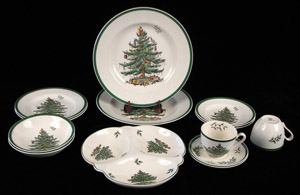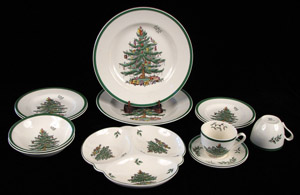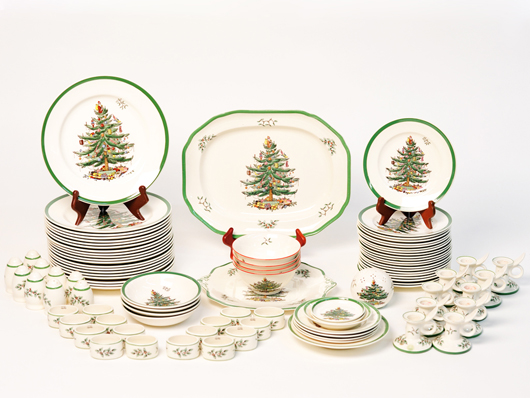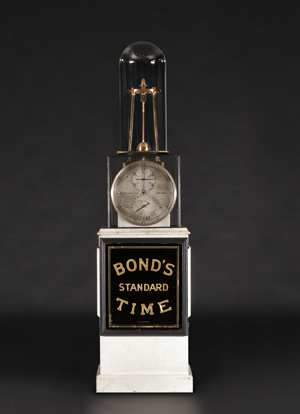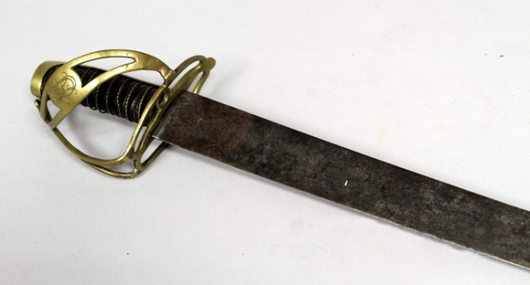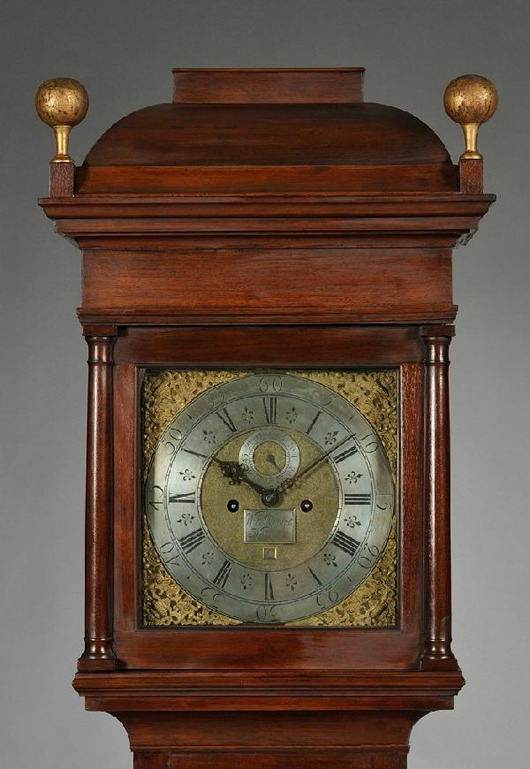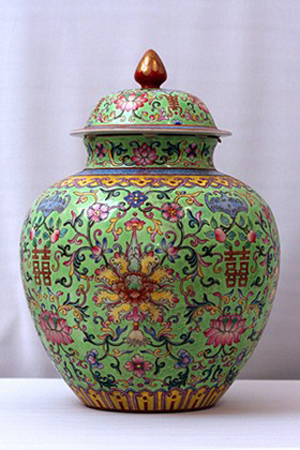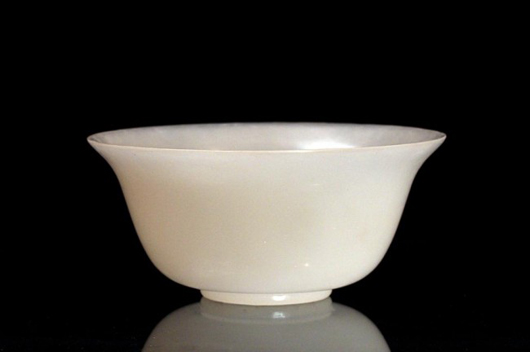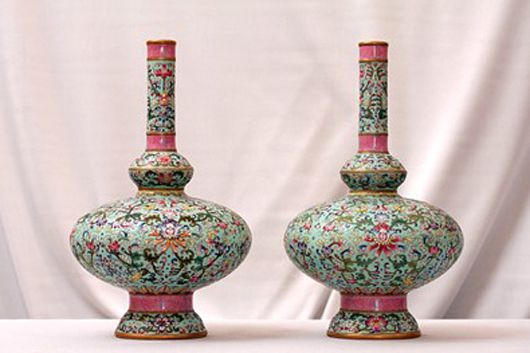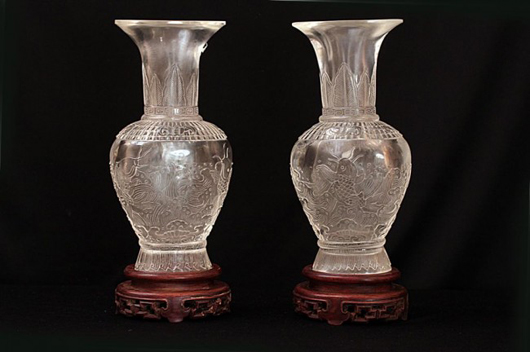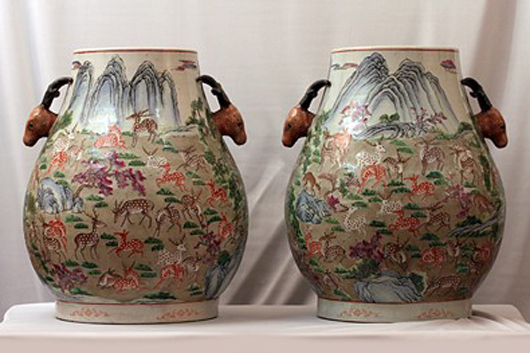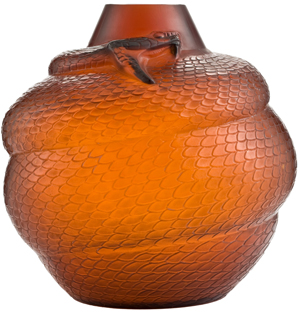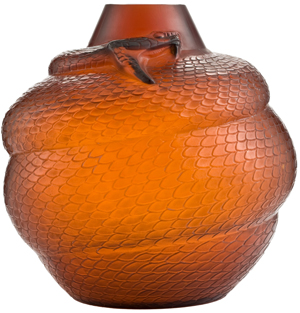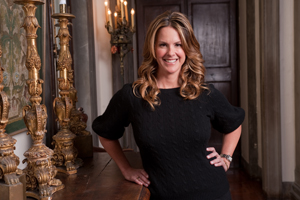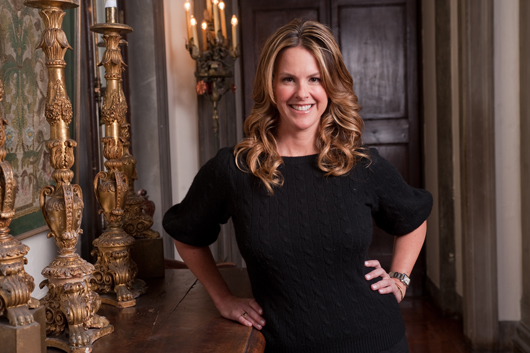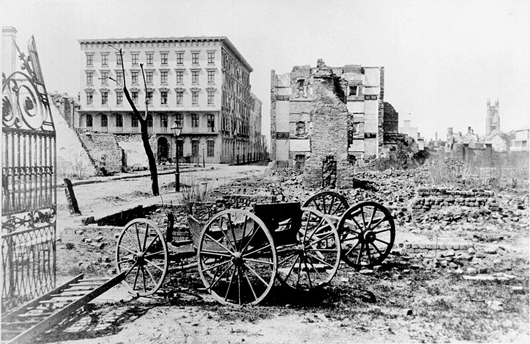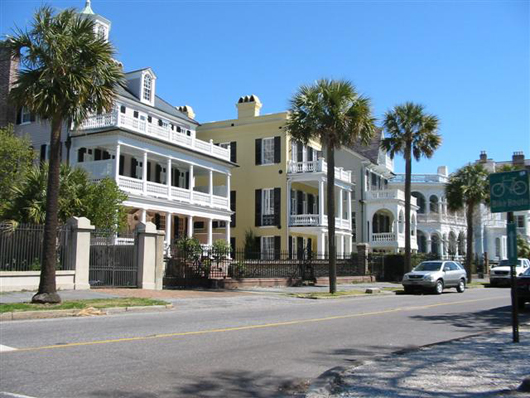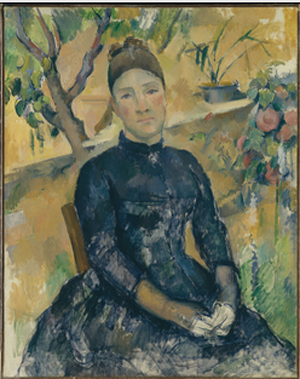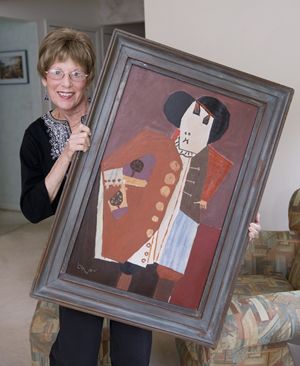
Titled The Statesman, the 18 by 28 inch oil-on-canvas portrait was consigned by D.C.-area resident Enid Liess, a retired schoolteacher who, as a young girl had studied at the Art Institute of Chicago. It was there that she learned how to identify quality artworks.
Sometime in the early 1960s, Liess attended an art auction at her local temple, where she hoped to find affordable art to decorate her new apartment. When a modern painting of a man in a military jacket caught her eye, Liess decided she had to have it. “It was whimsical, and I loved the earth tones,” Liess recalled.
At the time, Liess and her husband were newlyweds with little disposable income, so she had set a limit of $25 to spend at the auction. Although the artist was identified on the artwork, no one at the auction – including Liess – knew who Lichtenstein was. Accordingly, bidding on the painting opened lower than on works by most of the local artists with whom bidders were more familiar.
Liess had the bid at her maximum just as the hammer was about to fall on the Lichtenstein. Then, at the last moment, her friend upped the ante to $27.50. Liess was furious and rebuked her friend, who quickly informed Liess that it was intended as a housewarming gift for her and her husband. Liess told her friend that she felt $27.50 was too much to spend on a gift, and gave her $12.50 to apply toward the purchase price. The painting went home with Liess and hung in the couple’s new apartment with nothing more than a couch to keep it company.
While she knew the artwork’s title and the name of the artist who painted it, Liess was unaware of Roy Lichtenstein’s (American, 1923-1997) stature in the pop art world until she happened to come across a Time magazine article about the artist a couple of weeks later.
Her discovery prompted her to take the painting to the Milwaukee Art Museum, where experts confirmed The Statesman was a genuine Lichtenstein. Satisfied with that knowledge, she thought nothing more of it.
In 1968, Liess and her husband, Jerry, moved their family to Virginia. The artwork went with them to their new home, where it was displayed and enjoyed for the next 42 years.
This summer, after several months of treatment for breast cancer, Enid decided it was time to sell the Lichtenstein. She reached out to Matthew Quinn of Quinn’s Auction Galleries to inquire about selling the painting. Quinn advised her to contact Jack Cowart, the executive director of the Roy Lichtenstein Foundation, to see if he would come out to her home to authenticate the painting.
When Cowart heard Enid’s story and was told the title of the painting, he knew the work was one that the foundation had been searching for, and said he would be by in the morning to examine it.
“Upon seeing the painting, Jack Cowart literally danced around my living room,” Enid said. “He was so happy to have located it.”
The Lichtenstein foundation knew who had originally purchased The Statesman in 1951 from the John Heller Gallery in New York, but beyond that, the ownership trail was a mystery. The Foundation had been trying for decades to determine its whereabouts.
Quinn said that with Cowart’s imprimatur on the painting, all the elements for auction success were now in place – a bankable artist, a long-missing artwork and indisputable provenance. But auctions being as unpredictable as they are, Quinn said he wasn’t going to start the celebration too soon.
“Then on Friday, the day before the sale, the requests started coming in for phone lines. There were some major players registering, and at that point, we were no longer wondering if the painting would meet its reserve, but rather, how much farther it would go,” Quinn said.
At around 11:30 on the morning of the auction, The Statesman was announced to a full house. Bidding opened at $20,000 and slowly increased against an absentee bid of $40,000. “When the bidding got up to $60,000, I looked over at the Liesses. With a wink, Mr. Liess smiled at me,” Quinn said. “Moments later, tears of joy came across both of their faces.”
The bidding concluded at $110,000 on the hammer ($128,700 with the addition of a 17% buyer’s premium). “As I understand it, that’s a record price for a Lichtenstein of that period,” said Quinn.
Appropriately for a painting titled The Statesman, the Lichtenstein artwork is going to remain in the Washington, D.C. area. It is believed that it will be displayed in the home of its new owner, a private collector from suburban McLean, Va., who prefers not to be identified.
Quinn said he and his colleagues at the gallery felt honored to have been part of such an important art discovery, but that the true reward came from helping a couple in financial need. “After the auction we received a very nice thank-you letter from the Liesses,” said Quinn. “That’s when you know you’ve done your job well.”
# # #


